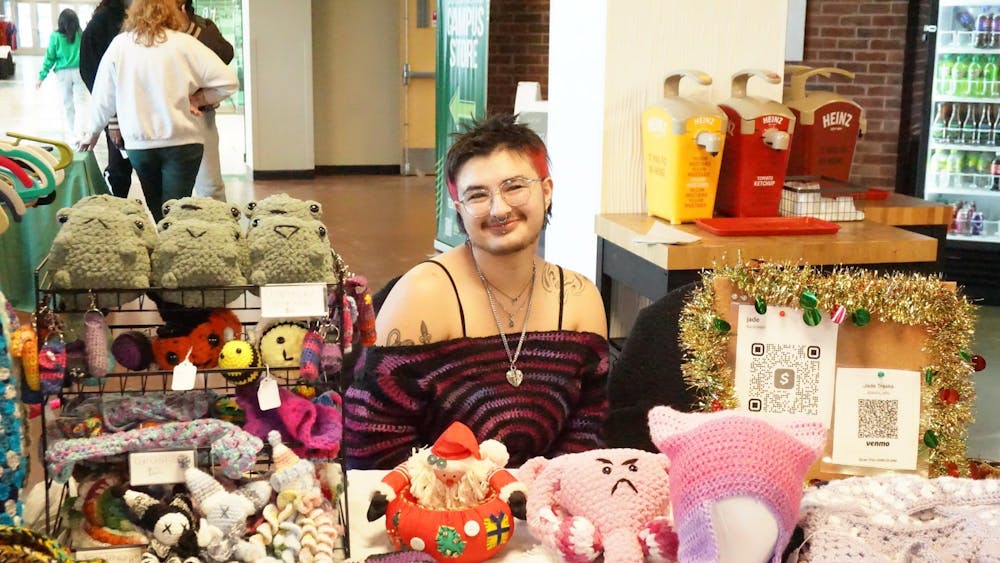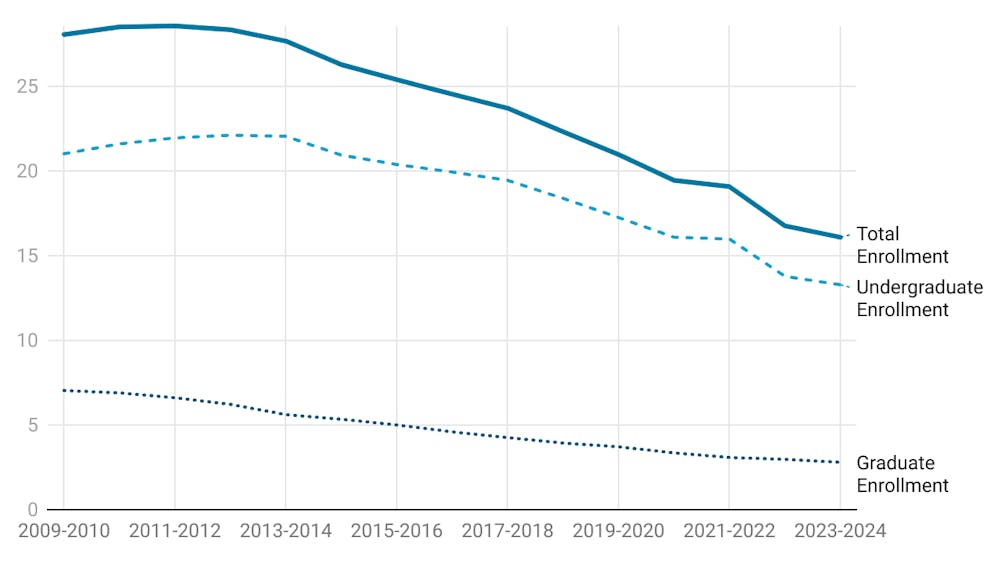The Political Science Department's Richard Stahler-Sholk greeted a group of over a dozen people for his lecture on Indigenous Autonomy Movements in Mexico Friday in Pray-Harrold.
Unlike the United States, Mexico has no reservations for its 60-plus recognized indigenous groups. They make up 14 percent of the Mexican population. Mexico has always tried to assimilate these groups into the greater Mexican community, rather than put them on reservations.
But, starting in 1994, a movement started in Mexico to create indigenous autonomous regions. Although their approaches differ, in general they reject the authority of the federal government in Mexico City and move towards traditional, usually collectivist, modes of organizing local society. This started as a consequence of NAFTA.
“Article 27 of the Mexican constitution, which was a product of the Mexican revolution, 1917, guarantees that peasants have the right to the land – that they need to feed themselves and their families,” Stahler-Sholk said. “If they don't have that land, then the government has the obligation to find it.”
For nearly 100 years, any group of people could organize themselves to create these collective farms, called an Ejido. The only thing the group of people couldn't do with the collectively run land was sell it. But, when the free-trade oriented NAFTA was passed, Mexico City caved to multinational interests who wanted everything to be on the open market. They stopped creating collective farms in this way and made it so Ejido members could vote to sell their land.
The first such group to do this was the Zapatistas, or EZLN. This was made up of mostly Mayans in Chipas, a state on the border with Guatemala. The local population decided that the only way they were going to get the attention they needed was to organize locally, so they took up arms and took over the government, booting the state and federal officials.
It's important to clarify that none of these movements are aiming for succession in any way. They are very much wanting to remain Mexican, but with considerations given for their indigenous status and greater local control, especially in the light of systematic corruption.
Corruption like what sparked a similar movement in Cherán, Michocán, Mexico faced. This community, a few hundred miles west of Mexico City, is in a forested, mountainous area. They got into conflict with loggers that would come into their area and rip out trees in the middle of the night. They found that these loggers were backed up by the Knights Templar drug cartel, which were themselves backed up by the government.
According to an article in Vice, last year, the local Purépechan community got tired of this in 2011, so "marched en masse" to the local authority, which they no longer recognized, and kicked them, and the notorious PRI political party, out. Today, local security is handled by a local militia, the community guard, which reports to the regional government, made up of an indigenous council. The 20 or so cops that they kicked out didn't come back.
The biggest misconception that Stahler-Sholk said people have, especially in the United States, is of the nature of violence in Mexico.
“What we don't think about is the violence primarily comes from the state, or from groups that are promoted by the state,” Stahler-Sholk said. "Groups that are trying to live their lives in a more dignified in autonomous way are not generally being violent."
Furthermore, as Vice noted, their movements have often worked. They still pay taxes to and receive funding from Mexico City. Corruption and violence seem to be the main motivators.
The problem, from the point of view of these groups, Stahler-Sholk said in an answer during a question and answer session that took place after the half hour lecture, is that they've tried non-violent means for 500 years, through both the Spanish empire and its successor Mexican state.
Since 1994, the number of groups have only multiplied. Similar movements have popped up across Latin America, which is what Stahler-Sholk says he wants to move on to study next.









